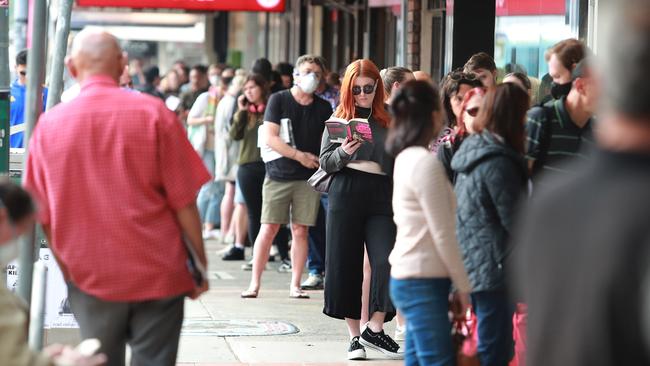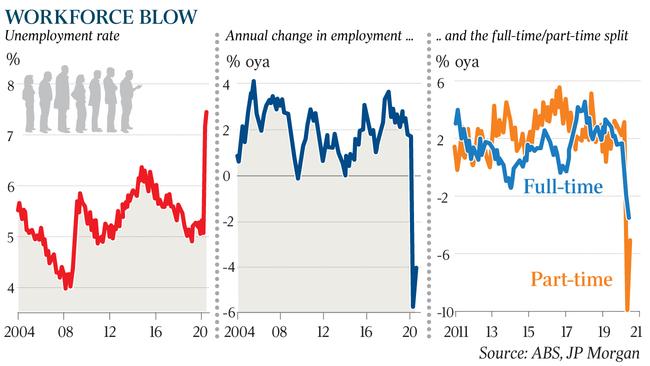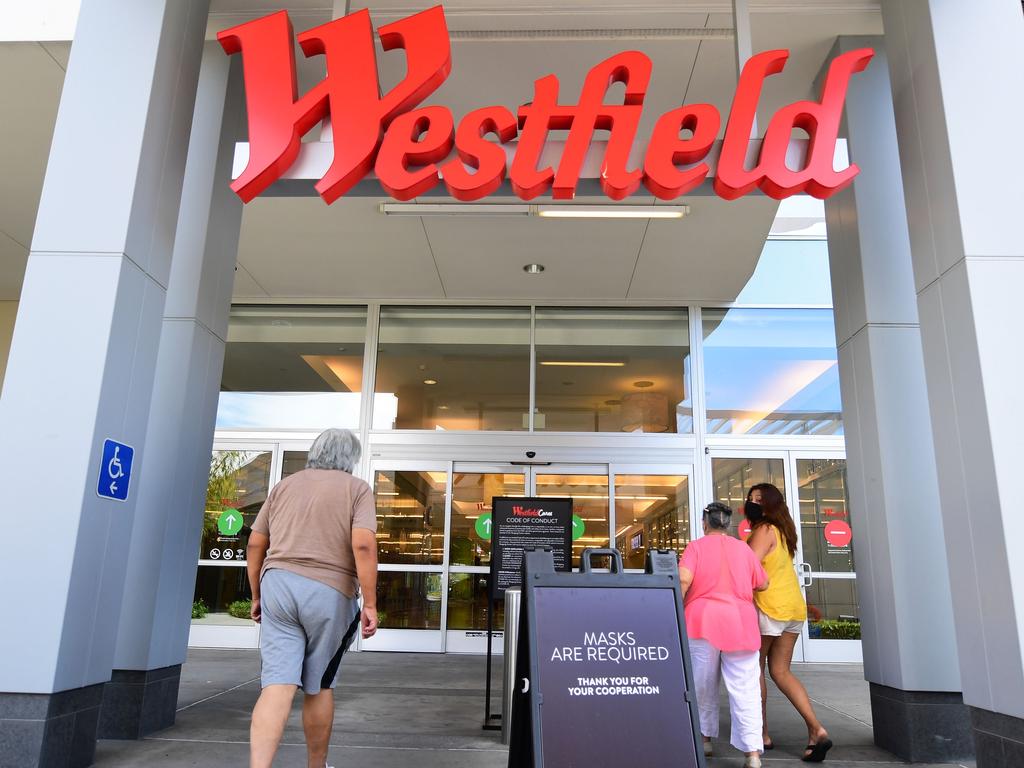Coronavirus: Old IR ways would cost jobs in recovery, says Scott Morrison
A rise in the jobless rate in June came as a jump in the number of employed was swamped by people back looking for work.

Scott Morrison has warned that a return to pre-COVID workplace arrangements would threaten the start of a labour market recovery, as employment surged by 210,800 last month with the partial reopening of the economy.
The rebound in employment opportunities sparked an extra 280,000 people to join the labour force, pushing the unemployment rate to 7.4 per cent in June from 7.1 per cent in May, the Australian Bureau of Statistics reported.
The 211,000 extra Australians who gained work last month represented just less than a quarter of the 870,000 jobs that were lost over April and May, showing that a full recovery remains a long way off. Part-time employment drove the increase in jobs, lifting by 249,000 in June, while full-time employment fell by 38,100 people.
With the number of unemployed Australians nearing one million, the Prime Minister said the jobs figures show “there is hope”.
But he warned that the virus outbreak and six-week lockdown in Greater Melbourne would weigh on July’s jobs numbers after Victoria recorded on Thursday its biggest daily increase in new cases.
“We have done it before and we can do it again. We will continue to apply every resource we have available to ensure we get on top of the health situation with the virus in Victoria and supporting the many needs that are there and across the other states and territories. That is our absolute commitment,” Mr Morrison said.
Hours worked rose by 4 per cent in June, but remained 6.8 per cent lower than March, the ABS reported.
To facilitate the government’s JobKeeper wage subsidy scheme, employers have been granted greater flexibility around the minimum number of hours they can offer to workers, with Mr Morrison warning it would be a mistake to roll back those arrangements.
“If we return to the inflexibility during the course of this crisis of the industrial relations arrangements that existed prior to the introduction of JobKeeper, then Australians will lose their jobs,” he said. “It will put people on the unemployment queues because businesses will not have the ability to ensure that that work is able to be provided to more Australians to keep them in their jobs.”

The official unemployment rate, which is the highest since 1998, has been held down through the crisis by people giving up looking for work, which they are not required to do to qualify for welfare during this period.
As a result, they are no longer being counted by the ABS as being in the workforce. Those on the government’s JobKeeper program, which has kept workers attached to their employers, even if their hours have been reduced to zero, are also not counted.
Treasury has estimated a “true” unemployment rate of about 13 per cent, against a peak of 11.1 per cent during the previous recession in the early 1990s, when people on JobKeeper and those who have given up looking for work are counted.
The easing of restrictions from late May has allowed businesses to reopen and people to return to jobs or actively look for work. The ABS noted that about 70 per cent of the newly unemployed in June were not in the labour force in May.
Sectors such as hospitality, which are large employers of part-time and casual workers, were hit hardest by social distancing measures, but have also recorded the strongest recovery to date, although they remain well below pre-COVID levels.
The underemployment rate — a measure of those who have jobs but would like to work more — improved markedly from 13.1 per cent in May to 11.7 per cent in June.
Ahead of the government’s economic and fiscal update on July 23, ACTU president Michele O’Neil warned that the end of the JobKeeper wage subsidy in September would lead to a “huge” jump in unemployment. “No one wants to see more people fall through the gaps, which is why we need to extend JobKeeper and deliver a comprehensive plan for a jobs-led reconstruction,” she said.
The ABS’s survey was done over the first half of June, after key social distancing restrictions were eased in late May. Economists expect the jobless rate to rise to about 8 per cent and stay elevated for an extended period. New Treasury estimates will be out on July 23.








To join the conversation, please log in. Don't have an account? Register
Join the conversation, you are commenting as Logout